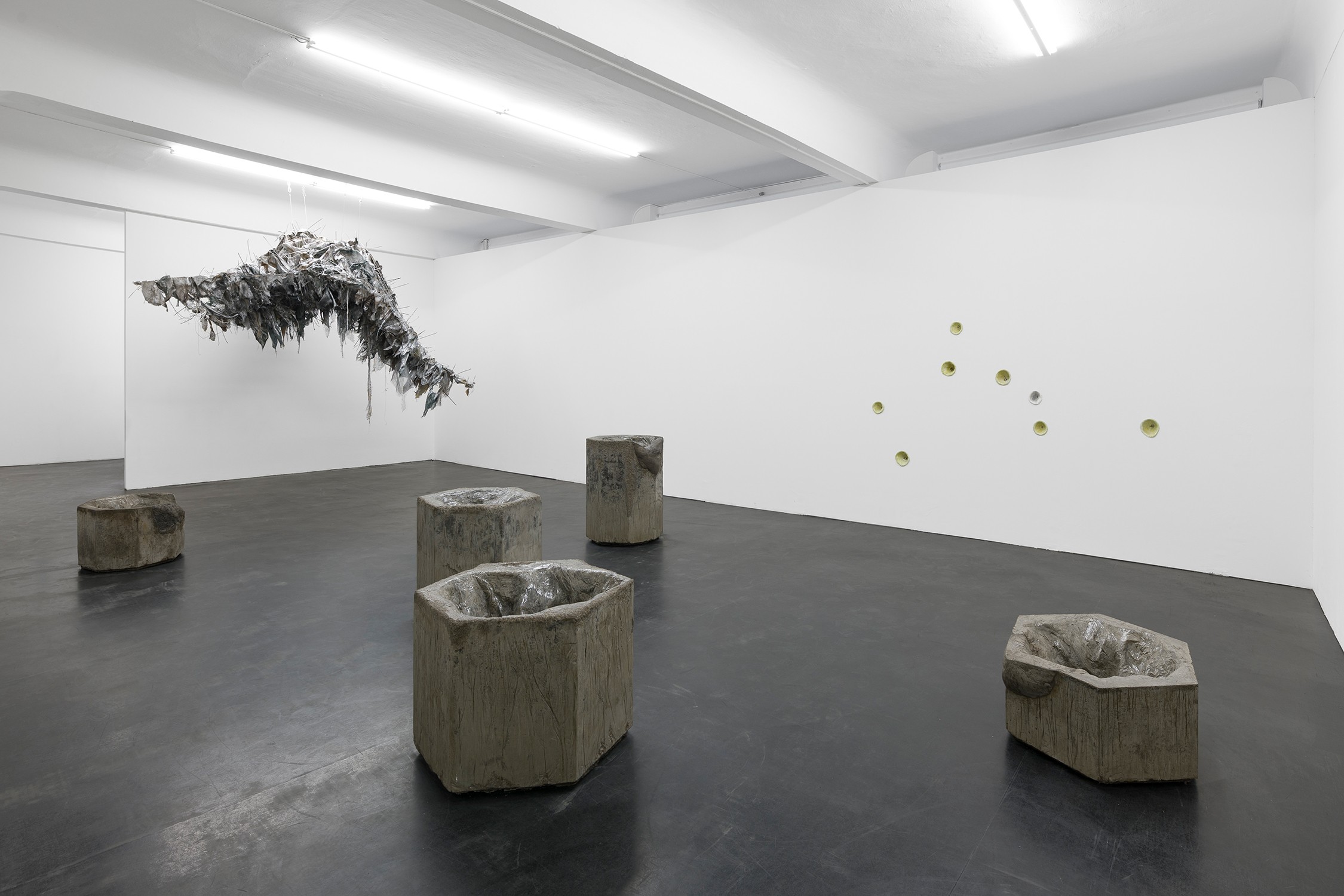
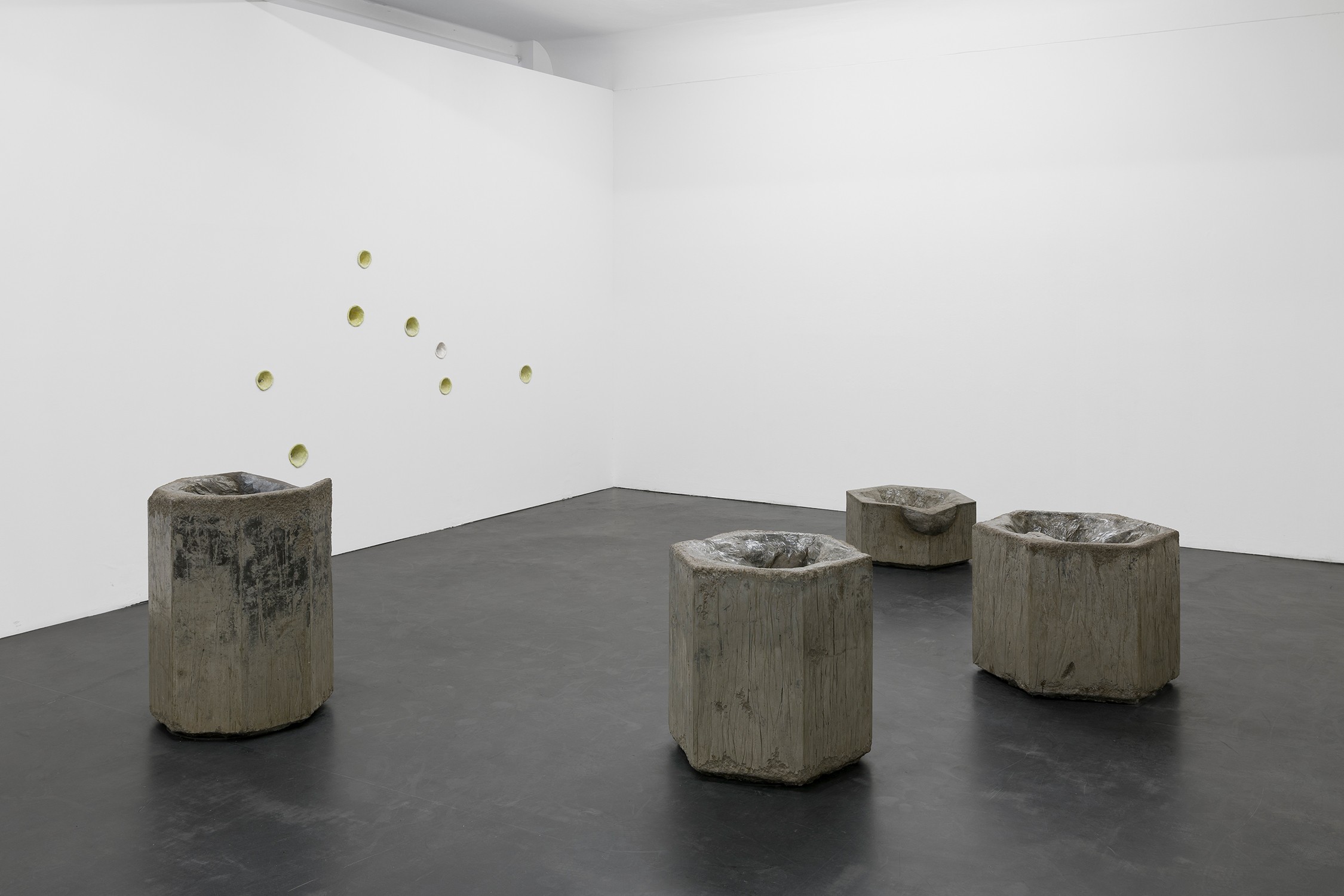
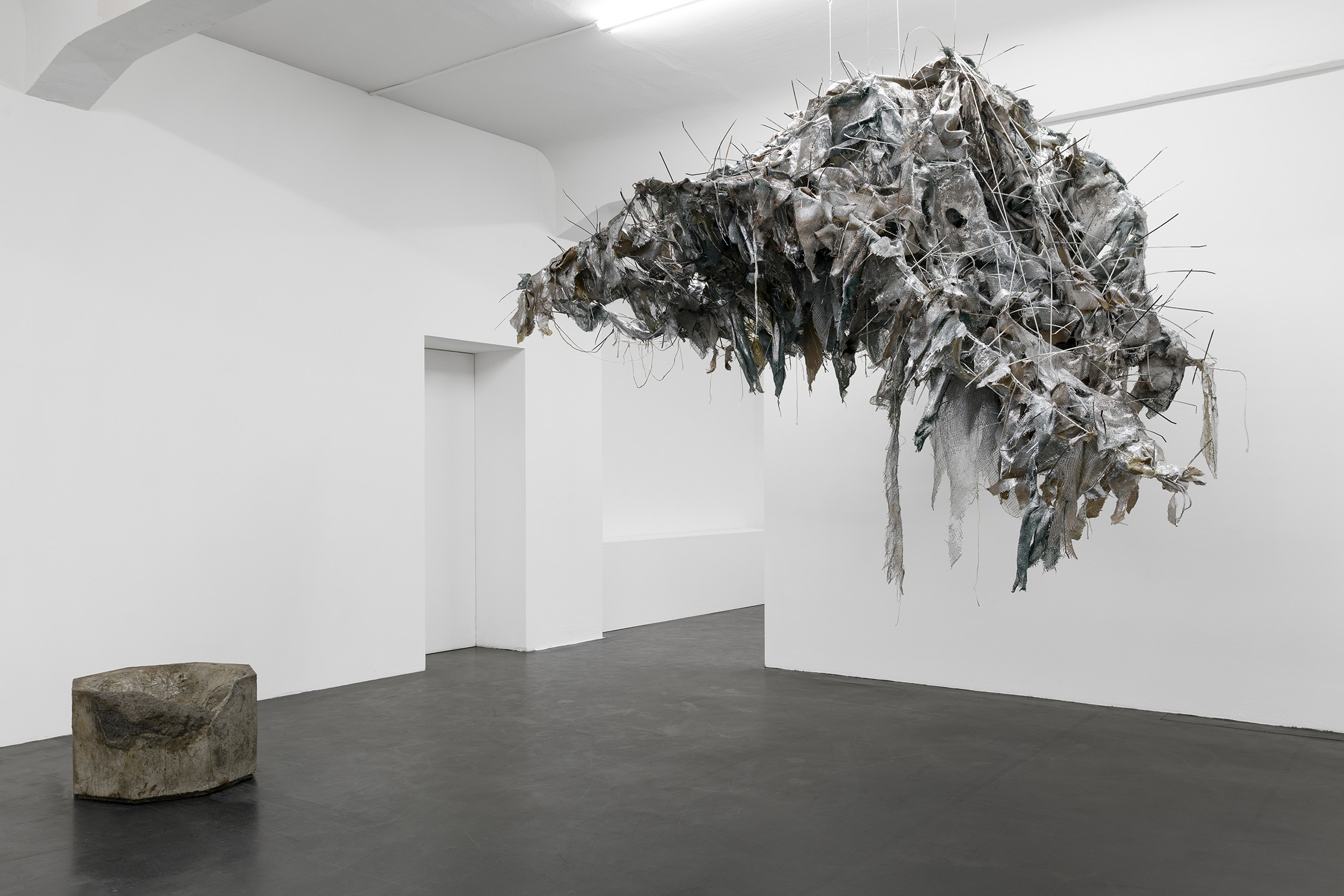
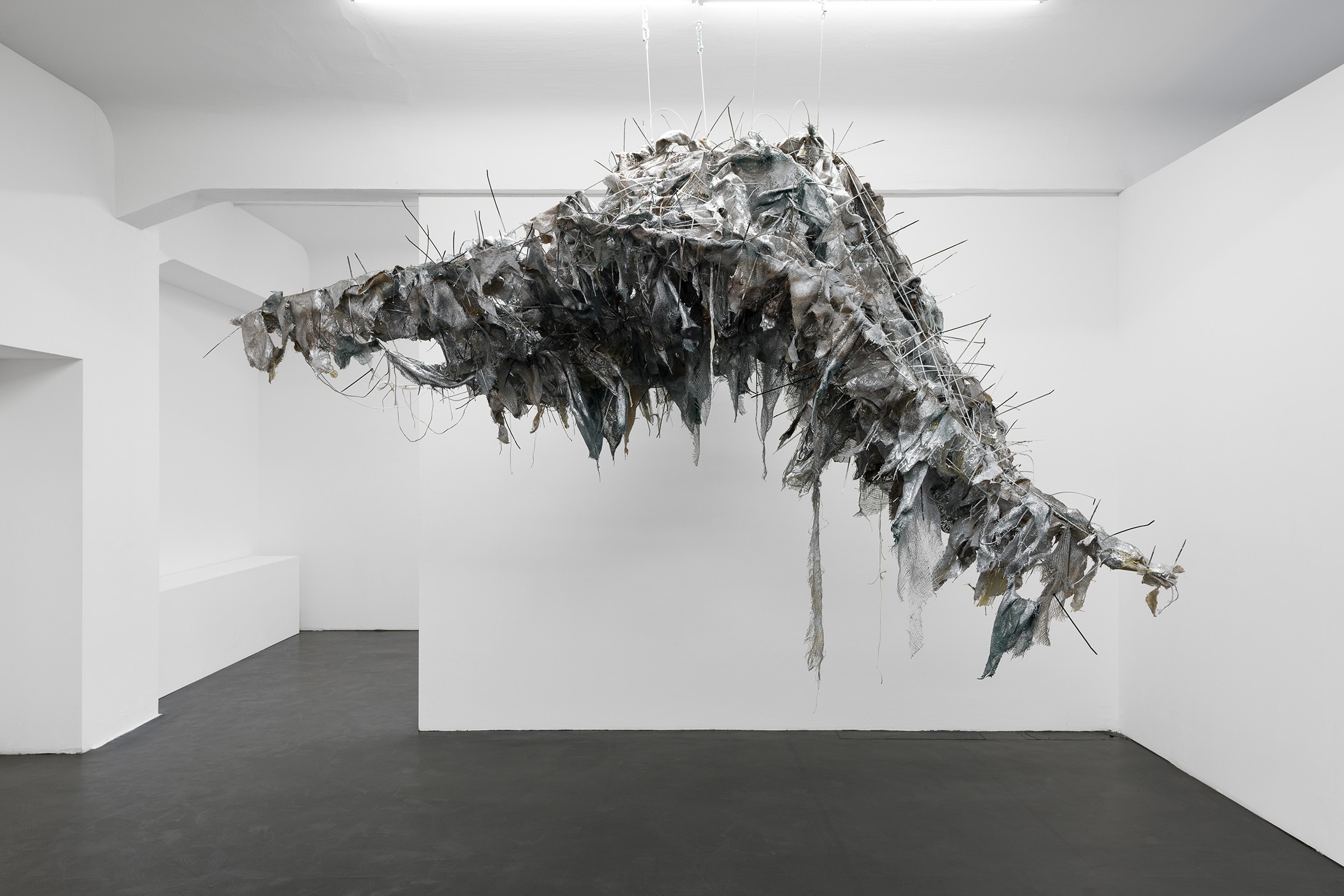
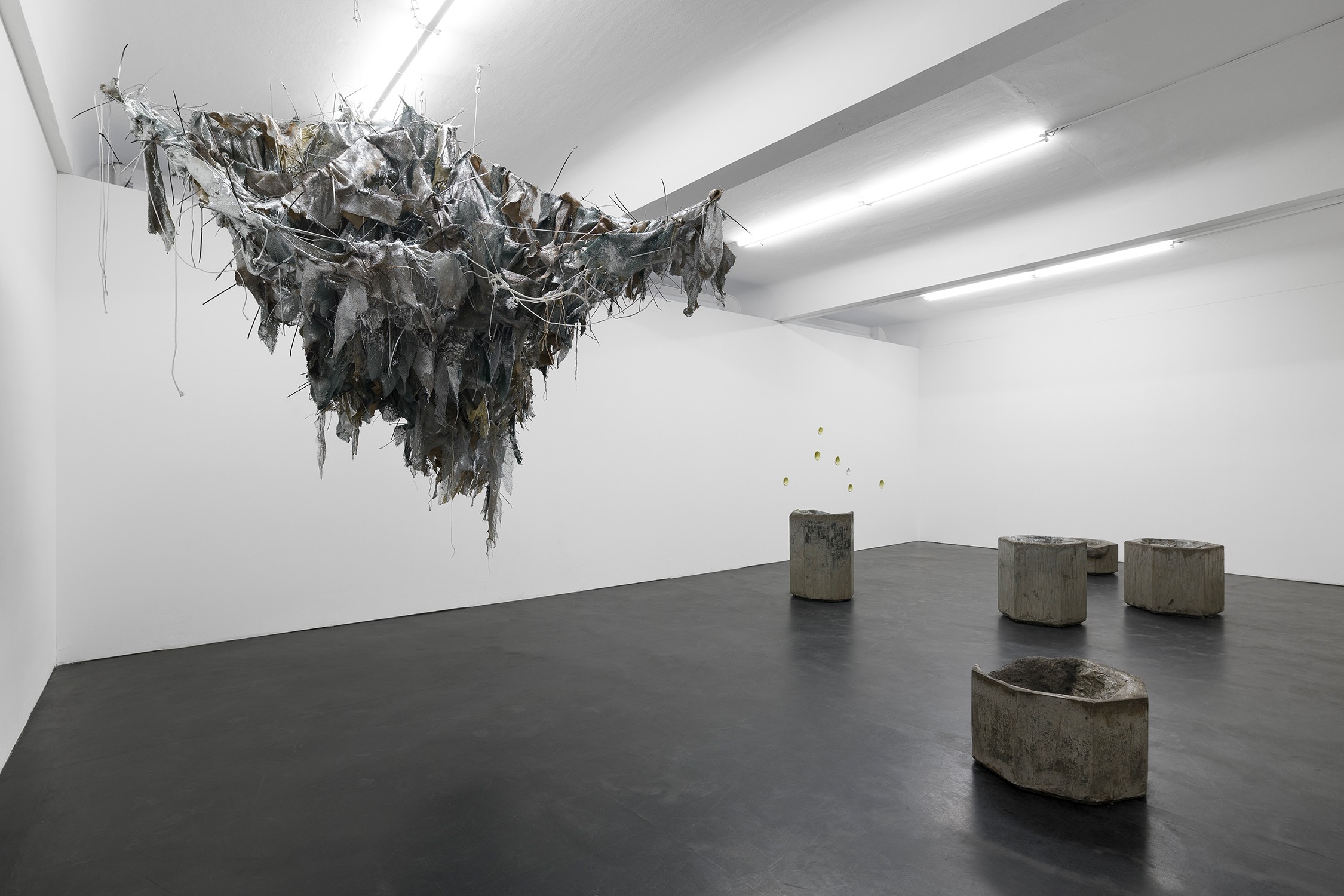
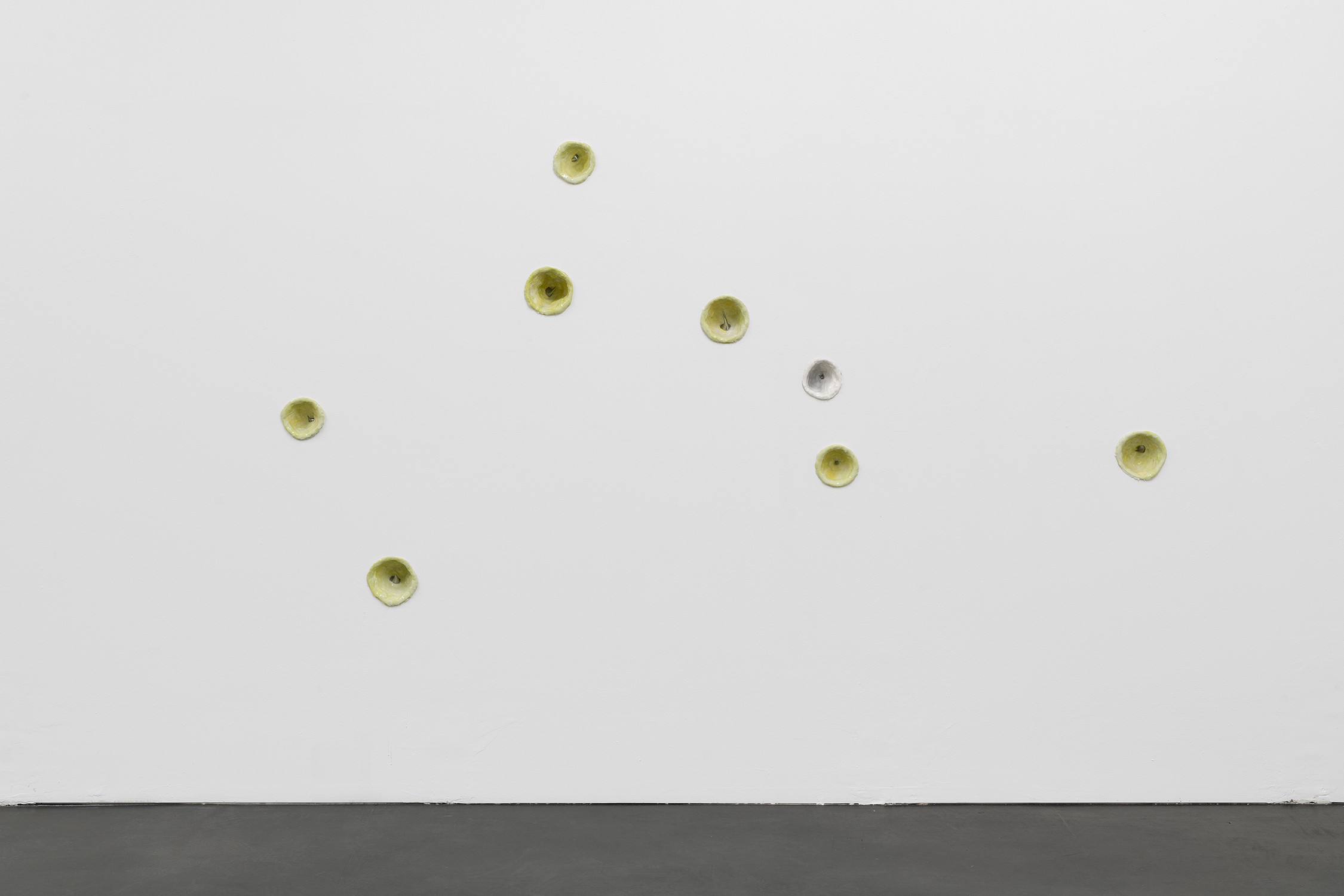

The alexander levy gallery is pleased to present new works by Gereon Krebber under the title Tepidarium. In his third solo exhibition at the gallery, the Cologne sculptor shows an ensemble of concrete sculptures alongside smaller wall inserts and a site-specific hanging net structure.
The five massive concrete steles from Gereon Krebber’s latest series, Graufleisch (Grey Flesh) have hexagonal or octagonal forms. The stereometric, block-like bodies closing horizontally towards the top, are partly hollowed out – holes gape at the tops of the sculptures as if they were organically inverted. Towards the bottom, the hollow form tapers like a throat or a cave opening, and below it, an empty volume follows, which opens again like a stomach and remains visible from above. “It may seem like looking into an open throat like a dentist,” says Gereon Krebber. “The pieces look as if monumental machine screws, antique column fragments and medical rectal examinations have been sculpturally combined.”
The surface structure reinforces this ambiguous effect. Gereon Krebber cast the concrete in plastic foil. With this method, the “cast skin” of the concrete shows wrinkles and creases and the resulting texture resembles elephant skin, which increases the works’ physicality. The title Graufleisch also corresponds to this impression of aged skin. The artist has partially “shattered” the freshly cast concrete skin, especially along the upper and lower edges, piece by piece with a chisel and wooden mallet, whereby the chisel traces remain visible. This surface treatment is reminiscent of ancient ruins and erratic column fragments. The title of the exhibition Tepidarium holds another allusion: borrowed from Latin, it describes the lukewarm water in Roman thermal baths – implying the exhibition could be dealing with found, ancient stone blocks.
The blocks challenge the viewer because of the connection of opposing associations: they are in decay and yet stand strictly upright; they open up voraciously, almost obscenely and bounce one’s view back from the sides. “But on a more fundamental level, relevant for interpreting the works, this is not about the obsessions of an artist, but about the simple reality that we neither understand nor aesthetically esteem too much our bodies and the organic processes that go on inside of them without our having to do anything, the reason why we mostly suppress both. By objectifying aspects of this foreignness of our biological side in the medium of sculpture, Gereon Krebber puts processes of recognition in motion. The “Shift capacity” in his works consists in the fact that aspects of corporeality recur in the culturally established form of abstract sculpture”[1]
Two other series of works in the exhibition also reflect this theme. Sprayed with chrome, perforated and dipped in expanding glue, a net of jute hangs under the ceiling like a bulbous, splayed foreign body. Several round silicone castings are embedded in the wall of the gallery. In each of the slightly irregular holes, there is a metal spike, which flashes in polished silver. It protrudes from the soft, yellow-greenish silicone as if it could push itself up like a canine tooth and sting with its tip.
Gereon Krebber, born 1973 in Oberhausen, lives and works in Cologne. He studied at the Düsseldorf Art Academy with Professor Tony Cragg and Professor Hubert Kiecol and at the Royal College of Art in London. He has taught at the Düsseldorf Art Academy as Professor of Sculpture since 2012. Gereon Krebber has had institutional solo exhibitions at the Städtische Galerie im Park, Viersen (2018), Museum DKM Duisburg (2016), Folkwang Museum, Essen (2016), Kunstmuseum Gelsenkirchen (2013), among others.
[1] Peter Lodermeyer, Sculpture’s Capacity of Shifting. Gereon Krebber, in: „Gereon Krebber – Vom blorp zum Blobster“, Engl. transl. by Elizabeth Volk, Kunstmuseum Gelsenkirchen 2013, p. 67.